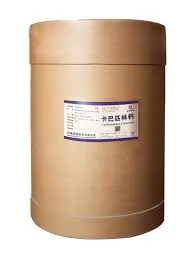- Afrikaans
- Albanian
- Amharic
- Arabic
- Armenian
- Azerbaijani
- Basque
- Belarusian
- Bengali
- Bosnian
- Bulgarian
- Catalan
- Cebuano
- Corsican
- Croatian
- Czech
- Danish
- Dutch
- English
- Esperanto
- Estonian
- Finnish
- French
- Frisian
- Galician
- Georgian
- German
- Greek
- Gujarati
- Haitian Creole
- hausa
- hawaiian
- Hebrew
- Hindi
- Miao
- Hungarian
- Icelandic
- igbo
- Indonesian
- irish
- Italian
- Japanese
- Javanese
- Kannada
- kazakh
- Khmer
- Rwandese
- Korean
- Kurdish
- Kyrgyz
- Lao
- Latin
- Latvian
- Lithuanian
- Luxembourgish
- Macedonian
- Malgashi
- Malay
- Malayalam
- Maltese
- Maori
- Marathi
- Mongolian
- Myanmar
- Nepali
- Norwegian
- Norwegian
- Occitan
- Pashto
- Persian
- Polish
- Portuguese
- Punjabi
- Romanian
- Russian
- Samoan
- Scottish Gaelic
- Serbian
- Sesotho
- Shona
- Sindhi
- Sinhala
- Slovak
- Slovenian
- Somali
- Spanish
- Sundanese
- Swahili
- Swedish
- Tagalog
- Tajik
- Tamil
- Tatar
- Telugu
- Thai
- Turkish
- Turkmen
- Ukrainian
- Urdu
- Uighur
- Uzbek
- Vietnamese
- Welsh
- Bantu
- Yiddish
- Yoruba
- Zulu
10 月 . 21, 2024 21:43 Back to list
Exploring the Benefits and Uses of Tylosin in Veterinary Medicine
Tylosin 200 A Promising Antibiotic in Veterinary Medicine
Tylosin is a macrolide antibiotic widely utilized in veterinary medicine for its potent antibacterial properties, particularly in livestock and poultry. Among its various formulations, Tylosin 200 is a popular choice, owing to its effective dosage and beneficial effects. As a veterinary therapeutic agent, Tylosin has been essential in managing and preventing bacterial infections in farm animals, contributing not just to animal health but also to food production efficiency.
Mechanism of Action
Tylosin operates by inhibiting protein synthesis in bacteria, primarily targeting the 50S subunit of the bacterial ribosome. This mechanism effectively disrupts the growth and reproduction of susceptible bacteria, leading to their death. Tylosin is particularly effective against Gram-positive bacteria, which are often responsible for infections in livestock. Its action against certain Gram-negative bacteria also broadens its spectrum of effectiveness, making it a versatile choice for veterinarians treating various conditions.
Applications in Veterinary Medicine
Tylosin 200 is primarily used in treating respiratory tract infections, enteritis, and other bacterial infections in animals such as pigs, cattle, sheep, and poultry. In pigs, it is commonly employed to manage swine respiratory disease caused by Mycoplasma species and other pathogens. For cattle, particularly in the beef and dairy industries, Tylosin plays a crucial role in controlling mastitis—an inflammatory condition of the mammary gland caused by bacterial infections. The use of Tylosin in poultry has also proven beneficial in reducing incidences of necrotic enteritis and other enteric diseases.
The speed of action and broad spectrum make Tylosin 200 an efficient tool for veterinarians, but it comes with the responsibility for appropriate use. Misuse or overuse of antibiotics can lead to antibiotic resistance, a concern that has spurred regulatory bodies to monitor and control antibiotic use in agriculture. Veterinarians are tasked with managing the balance between effective disease treatment and the risk of developing resistant strains of bacteria.
tylosin 200

Pharmacokinetics and Administration
The pharmacokinetics of Tylosin show that it is well-absorbed after administration, with peak plasma concentrations occurring a few hours post-dose. This rapid absorption allows for effective management of acute infections. Tylosin 200 formulations are typically administered via injection, feed, or drinking water, depending on the animal and the infection's nature. Dosage must be carefully monitored, as excessive amounts can lead to adverse reactions or decreased effectiveness.
Regulatory Perspective
Due to the global concern regarding antibiotic resistance, regulatory bodies such as the European Medicines Agency (EMA) and the U.S. Food and Drug Administration (FDA) have established stringent guidelines governing the use of antibiotics in food-producing animals. These regulations aim to safeguard public health while ensuring that livestock remains healthy and productive. Farmers and veterinarians are encouraged to adhere strictly to these guidelines, advocating for responsible use practices including monitoring animal health and employing alternative management strategies.
Conclusion
Tylosin 200 represents a vital component in the arsenal against bacterial infections in veterinary medicine. Its broad-spectrum activity and effectiveness in a variety of species make it a go-to choice for treating infections in livestock. However, the concerns regarding antibiotic resistance necessitate a cautious approach to its use. Ongoing research and education on responsible antibiotic use, coupled with the development of alternative treatments, will be critical for the future of livestock health and the preservation of effective antibiotics.
In conclusion, Tylosin 200 stands out as a valuable tool in veterinary therapeutics, contributing to improved animal welfare and health, which ultimately benefits the agricultural sector and food safety. The challenge lies in balancing its efficacy against the risks of resistance, ensuring that this antibiotic remains a viable treatment option for years to come. As the landscape of veterinary medicine evolves, Tylosin 200 is poised to retain its significance, provided its use is managed judiciously.
-
The Power of Radix Isatidis Extract for Your Health and Wellness
NewsOct.29,2024
-
Neomycin Sulfate Soluble Powder: A Versatile Solution for Pet Health
NewsOct.29,2024
-
Lincomycin Hydrochloride Soluble Powder – The Essential Solution
NewsOct.29,2024
-
Garamycin Gentamicin Sulfate for Effective Infection Control
NewsOct.29,2024
-
Doxycycline Hyclate Soluble Powder: Your Antibiotic Needs
NewsOct.29,2024
-
Tilmicosin Premix: The Ultimate Solution for Poultry Health
NewsOct.29,2024













